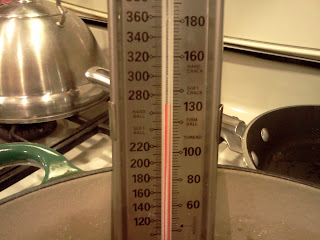Simple, balanced flavors of lemon, garlic, chilies, vinegar, and fresh herbs are all you need to make an irresistible marinade & sauce for steaks, poultry, fish, or vegetables.
Baja steaks from our own local United Markets are a great value at under $6/pound. Tender cuts averaging under a pound each, these are ideal for dinner parties small or large. Although they have little fat, they are tender as a filet, without the crazy price.
Chimichurri
4 cloves garlic
1t kosher salt; more as needed
1 bunch flat-leaf parsley, stemmed and chopped (about 1-1/2 cups, lightly packed)
1t dried oregano
1 small carrot, finely grated
1/2t freshly ground black pepper
1t kosher salt; more as needed
1 bunch flat-leaf parsley, stemmed and chopped (about 1-1/2 cups, lightly packed)
1t dried oregano
1 small carrot, finely grated
1/2t freshly ground black pepper
1/2t dried red chile flakes
1/2t grated lemon zest
5T white-wine vinegar or distilled white vinegar; more to taste
5T cold water; more as needed
1C extra-virgin olive oil (use less if you prefer)
1/2t grated lemon zest
5T white-wine vinegar or distilled white vinegar; more to taste
5T cold water; more as needed
1C extra-virgin olive oil (use less if you prefer)
Finely chop the garlic on a cutting board. Sprinkle the salt over it and repeatedly scrape the flat side of the knife over the garlic to mash it to a paste. Scrape the garlic paste into a medium bowl. Add the parsley, oregano, carrot, pepper, chile flakes, and lemon zest and mix. Add the vinegar and water and mix again. Whisk in the oil. Taste and correct the seasonings, adding salt, vinegar, water, or chile flakes: the sauce should be highly seasoned.
Place the steaks in a dish, and liberally coat with some of the chimichurri, reserving the rest for after grilling. Marinade for at least 1 hour, or overnight. Flank steak or skirt steak are also ideal choices for this treatment.
Grill steaks over coals to preferred doneness. Baja steaks are ideally cooked medium-rare since they have little fat. Remove steaks from the grill, coat with more chimichurri, and let rest loosely tented with foil for 5-10 minutes before slicing.
Excellent with summer squash, potatoes, atop a salad, or as the showstopper in your quesadillas or tacos.
Store leftover steak in your belly.
Recipe courtesy of Fine Cooking Magazine









